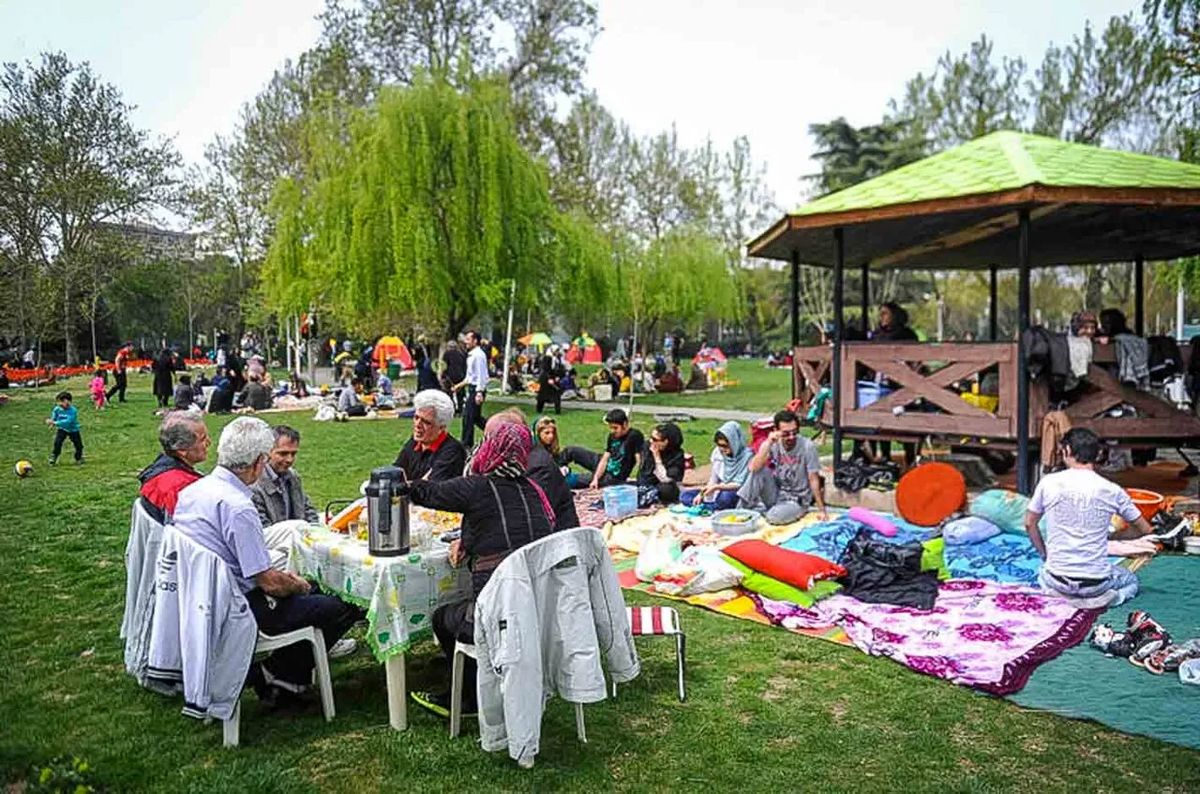After weeks of celebrating the arrival of Nowruz—the Persian New Year—Iranians mark the final day of the festive period with a joyous outdoor celebration called Sizdah Bedar (سیزده بدر), or "Thirteen Outdoors." This vibrant tradition, held on the 13th day of Nowruz, is a time for families and communities to come together in nature, enjoy the spring weather, and bid farewell to the Nowruz festivities. In this blog post, we’ll explore the history, customs, and significance of Sizdah Bedar, an exuberant celebration that brings people into the embrace of nature and joy.
🌿 What is Sizdah Bedar?
Sizdah Bedar is celebrated on the 13th day of Nowruz, marking the end of the official Nowruz holiday period. The number 13 is considered unlucky in Persian culture, which is why Iranians traditionally leave their homes on this day to avoid bad luck and to refresh their spirits in nature. The tradition is deeply rooted in the idea of renewal, growth, and connection to nature, which are central themes of the Persian New Year celebration.
In ancient times, Sizdah Bedar was a way to mark the end of winter and the arrival of spring. The festival is a celebration of life, fertility, and the earth's cycles, drawing inspiration from the Persian agrarian lifestyle and Zoroastrian reverence for nature. Today, it remains a joyful day for families to spend time outdoors and participate in a variety of fun activities, from picnicking to playing games, and sometimes even performing rituals meant to ensure good luck for the rest of the year.
🌿 Sizdah Bedar Traditions and Customs
The central custom of Sizdah Bedar involves spending the day outdoors, typically in parks, gardens, or countryside areas. Iranians take advantage of the mild spring weather to enjoy the beauty of nature, have a picnic, and engage in family-oriented activities. Some of the key rituals and traditions of Sizdah Bedar include:
1. Picnicking in Nature
One of the most popular traditions of Sizdah Bedar is the picnic. Families and friends prepare traditional dishes, such as kebab, sabzi polo (herb rice), and fresh fruits, and bring them to the park or countryside to enjoy a meal together. The outdoor setting offers a sense of freedom, and the air is filled with the sounds of laughter, music, and conversations.
In many cities, public parks are filled with families lounging on picnic blankets, enjoying food, playing games, and basking in the spring sunshine. It’s a day where people leave behind the bustle of daily life and focus on simply enjoying each other’s company and connecting with nature.
2. Throwing Away the Sabzeh
One of the unique traditions associated with Sizdah Bedar is the discarding of the sabzeh (سبزه)—the sprouted wheat or lentils from the Haft-Seen table, which symbolizes rebirth and renewal. On Sizdah Bedar, the sprouted greens are taken to a running stream or river and thrown into the water. This act is believed to cleanse away any bad luck or negative energy, ensuring a fresh start for the new year. The sabzeh’s journey to the water symbolizes the release of the past and the embrace of new beginnings.
3. Playing Outdoor Games
Sizdah Bedar is a day full of activity and fun. Many families take part in traditional games such as tag, ball games, or the popular Persian game called "gav-mishi" (a type of folk wrestling). Children often play with kites, spinning tops, and other toys that celebrate the carefree spirit of spring. The physical activity and connection with the land highlight the joy of being alive and in tune with nature during the renewal of the season.
For some, Sizdah Bedar is also an occasion for dancing and singing—celebrating the beauty of nature through traditional Persian music and dances.
4. The Role of the "Sizdah Bedar" Rituals
Beyond the fun and games, Sizdah Bedar also has deeper cultural and symbolic significance. The day represents a final cleansing ritual to help rid people of bad luck and negative energy. By leaving their homes and celebrating in nature, people honor the earth, acknowledge the importance of renewal, and reaffirm their connection to the natural world.
5. The Legend of the Unlucky 13
The number 13 has long been considered unlucky in Persian culture, which is why the custom of going outdoors on the 13th day of Nowruz is seen as a way to avoid bad luck that might be associated with the number. By spending the day in nature, people symbolically avoid the misfortune of 13 and protect themselves from any ill fortune the day might bring.
🌿 The Symbolism of Sizdah Bedar
At its core, Sizdah Bedar celebrates the end of winter and the arrival of spring, symbolizing renewal, growth, and the fertility of the earth. It also marks the completion of the Nowruz festivities, with the festival's final day signaling a return to everyday life after weeks of celebration.
The day emphasizes the importance of purification—whether it be by casting away the sabzeh or by reconnecting with the land—and encourages individuals to embrace new opportunities, optimism, and fresh starts. The shared experience of eating, playing, and spending time with loved ones strengthens community bonds, creating memories that will last throughout the year.
🌿 Sizdah Bedar Around the World
Although Sizdah Bedar is primarily celebrated in Iran, the tradition has spread to other countries with Persian communities, including those in the United States, Canada, and Europe. In places with large Iranian populations, parks and open spaces come alive with Persian families gathering to celebrate.
For those who have never experienced Sizdah Bedar, the day provides a unique window into the heart of Persian culture—a culture that places a great deal of importance on nature, family, community, and renewal. Whether you’re in Tehran, Los Angeles, or Berlin, Sizdah Bedar remains a day of pure joy and connection.
🌿 Conclusion: A Day of Celebration and Renewal
Sizdah Bedar is a day of outdoor enjoyment and a beautiful celebration of spring, renewal, and the bond between people and nature. By gathering outdoors to picnic, play, and discard the sabzeh, Iranians honor ancient traditions and embrace the spirit of new beginnings. It’s a time to say goodbye to the old year and usher in the new one with joy, vitality, and hope for the future.
As the 13th day of Nowruz concludes, families return home, their spirits lightened and hearts full, ready to face the year ahead. Sizdah Bedar serves as a reminder that life is cyclical, and with every ending comes a fresh start, full of potential and promise.





